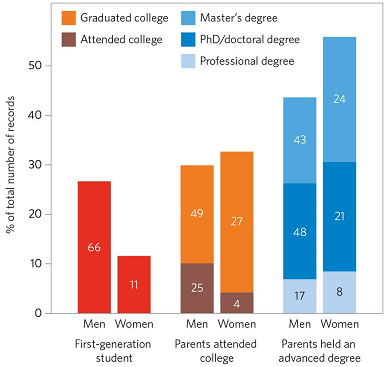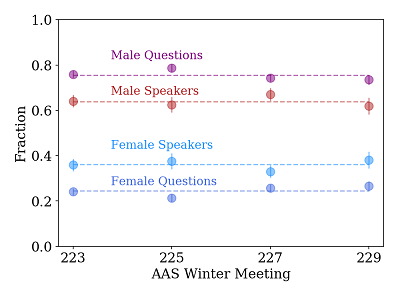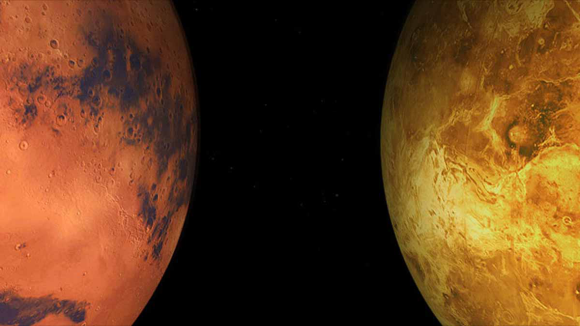Our Focus issue contains four Comments on the status of women in astronomy contributed by astronomers who have devoted their time to quantify the manifestation of discrimination against women in our community.
"Implicit bias in astronomy" by Pat Knezek deals with the subconscious bias that exists in everyone and that creates the tendency for people to revert to deeply held stereotypes and normative behaviours when under stress (for instance, instinctively coming up with a list of top 5 astronomers that contains only men). Knezek goes a step further and looks at the statistics of prizes awarded by the American Astronomical Society, showing that there is a clear under-representation of women in the most prestigious prizes of the Society, which exists in addition to the general under-representation of women members of the Society compared to their population representation.
 "Diversity and inclusiveness in large scientific collaborations" by Sara Lucatello and Aleksandar Diamond-Stanic summarizes some of the most interesting findings of a large-scale demographic survey of the Sloan Digital Sky Survey Consortium. Being one of the largest international collaborations in astronomy, a survey of this size offers unique advantages and a snapshot of the international astronomical community over similar more localized surveys. Lucatello and Diamond-Stanic find that women are under-represented in the collaboration and in senior positions (compared to the parity in the general population). Moreover, the fact that women come preferentially from well-educated families shows that the barrier for women to enter the collaboration is higher than for men.
"Diversity and inclusiveness in large scientific collaborations" by Sara Lucatello and Aleksandar Diamond-Stanic summarizes some of the most interesting findings of a large-scale demographic survey of the Sloan Digital Sky Survey Consortium. Being one of the largest international collaborations in astronomy, a survey of this size offers unique advantages and a snapshot of the international astronomical community over similar more localized surveys. Lucatello and Diamond-Stanic find that women are under-represented in the collaboration and in senior positions (compared to the parity in the general population). Moreover, the fact that women come preferentially from well-educated families shows that the barrier for women to enter the collaboration is higher than for men.
"Participation of women in spacecraft science teams" by Julie Rathbun presents the statistics of women astronomer participation in NASA's robotic space missions. Membership in such missions is highly prestigious and offers a leg-up to one's career in the field (due to increased opportunities for high-impact publications, presentations in important conferences, to name but a few). Rathbun finds that women astronomers are under-represented in these missions both compared to their membership in the American Astronomical Society and to their population representation. Moreover, while there has been an upward trend in the last couple of decades, very recent missions do not show a much higher fraction of women than those some ten years back.
 "Who asks questions at astronomy meetings?" by Sarah Schmidt and James Davenport asks the simple question of how discussion time is distributed in conferences between men and women participants. The authors find that men typically dominate the discussion, especially when the available time for questions is very short. They do observe a trend for longer question sessions to lead to a higher participation of women that reaches their representation in the conference participation for Q&A session of 6 questions or more. This result showcases again the higher barrier (both external and potentially internal) that women face in their everyday scientific life.
"Who asks questions at astronomy meetings?" by Sarah Schmidt and James Davenport asks the simple question of how discussion time is distributed in conferences between men and women participants. The authors find that men typically dominate the discussion, especially when the available time for questions is very short. They do observe a trend for longer question sessions to lead to a higher participation of women that reaches their representation in the conference participation for Q&A session of 6 questions or more. This result showcases again the higher barrier (both external and potentially internal) that women face in their everyday scientific life.
In our Editorial, "Not all scientists are raised equal", we highlight the fact that apart from the very real and egregious difficulties that women astronomers face, one cannot forget that there are other axes of discrimination (race, gender identity, sexual orientation, disability, etcetera) and people at the intersection of two or more of these axes suffer exponentially more. It is clear that a concentrated and focused effort is required for the situation to improve. National and international societies, research institutions, universities, funding agencies, publishers and ultimately anyone participating in the scientific process needs to be aware of all the biases lurking within our minds and work towards a more equitable future for astronomy.

